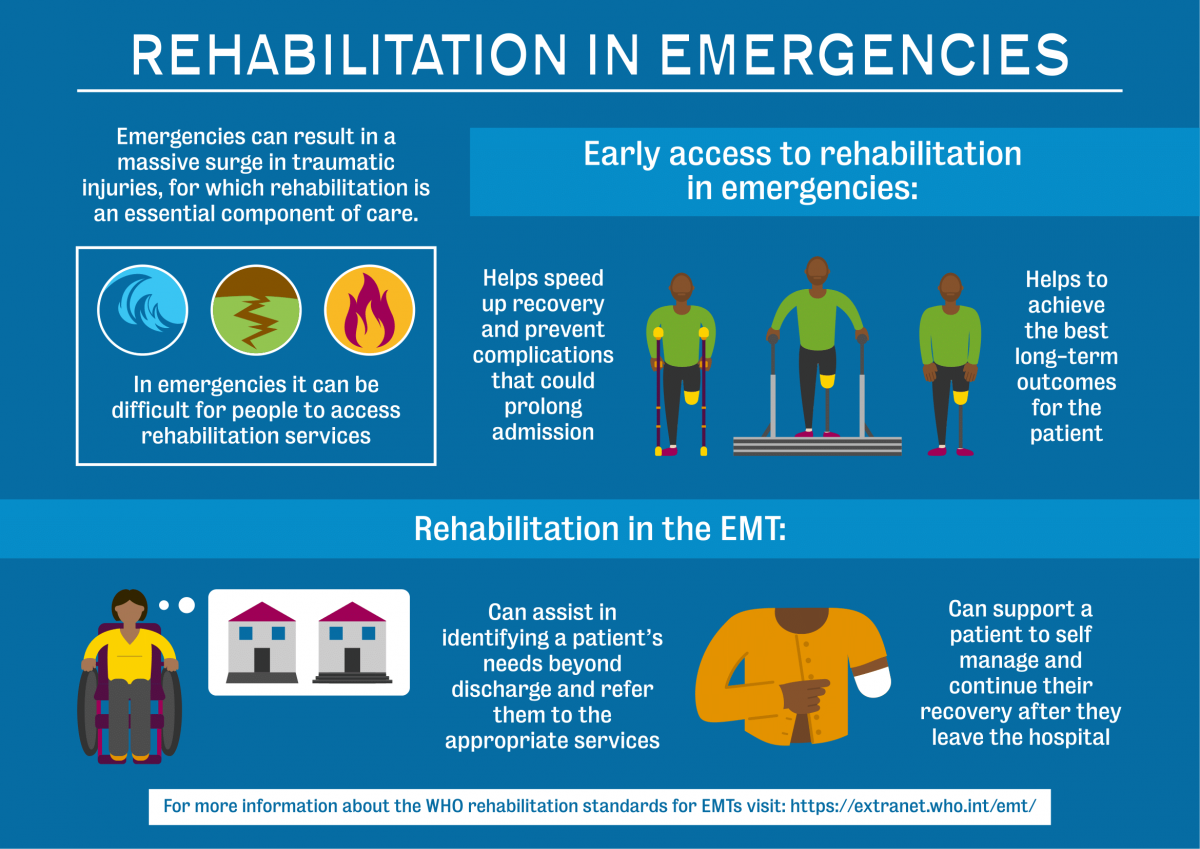
GENEVAÔÇöEmergencies, particularly sudden-onset disasters, can result in a surge of traumatic injuries that strain health systems and leave a legacy of disability in their wake. Responding to the needs of the people affected can be challenging in settings with limited health and rehabilitation infrastructure, where many emergencies occur. Having identified this crucial gap in patient care during emergencies, the WHO Emergency Medical Teams(EMT) Initiative together with partners such as CBM, Handicap International, and the International Committee of the Red Cross published minimum standards and recommendations for rehabilitation(link is external).
Early access to rehabilitation helps speed up recovery and prevents complications that could prolong admission, helping achieve the best long-term outcome for patients. ÔÇ£Technical standards reflect the priority of EMTs to save lives and prevent impairment and associated disability. We hope that teams not only adhere to the minimum standards but also go beyond them to ensure patients get the care they need from response to recovery no matter where they are in the world.ÔÇØ said Dr Ian Norton, Manager, Emergency Medical Teams Initiative
Having these standards in an EMT means that they will be able to assist in identifying a patientÔÇÖs needs beyond discharge and refer them to the appropriate services. This also supports a patient to self-manage and continue their recovery after they leave the hospital, acknowledging the importance of continuing sustainable care for patient outcomes and of referral to and strengthening of local services.
These standards emphasize the importance of including rehabilitation professionals in patient care at the earliest stage of any emergency response. By assisting in discharge planning and identifying local providers for ongoing care, rehabilitation professionals can help ensure appropriate and efficient patient flow through EMTs in any emergency.
